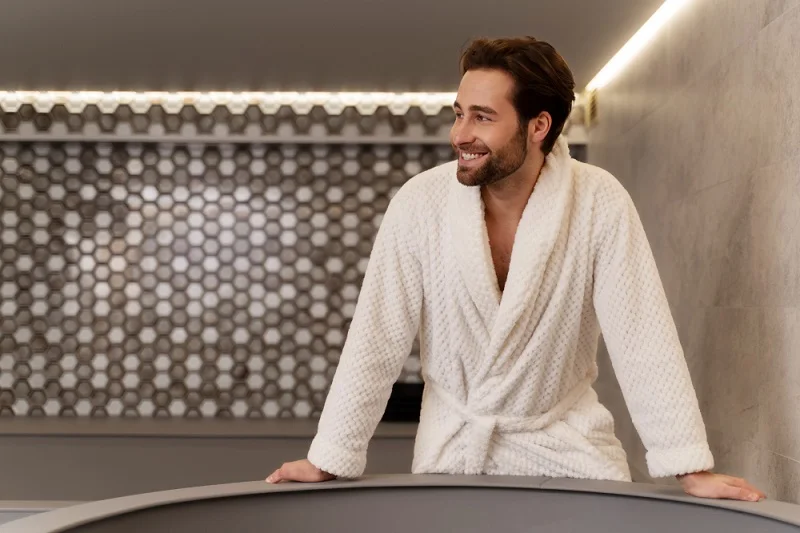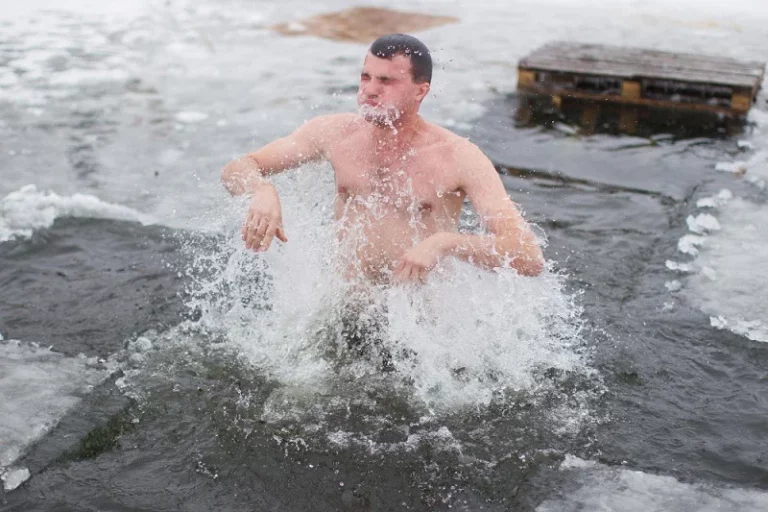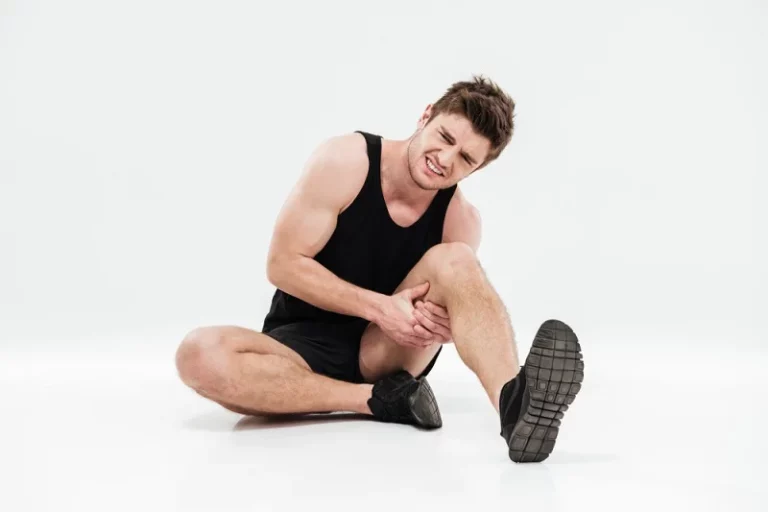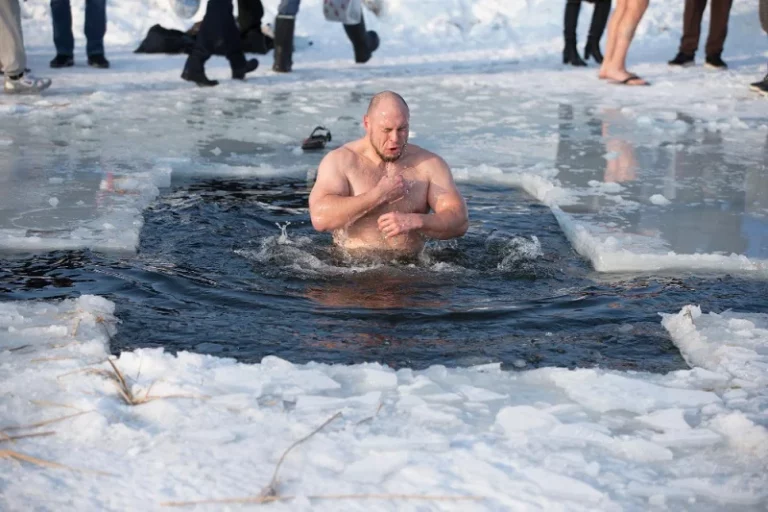What to Do Before Your Cryotherapy Session
Imagine this: You’ve been dealing with persistent muscle pain or skin issues for a while now. You’ve tried various treatments, but nothing seems to provide long-lasting relief. Frustrated and desperate for a solution, you stumble upon cryotherapy—a therapy that promises incredible benefits by exposing your body to freezing temperatures. Intrigued, you begin researching what to do before diving into this icy adventure.
Cryotherapy is an approach that involves subjecting your body to extremely cold temperatures for a short duration of minutes. It has gained popularity as a non-invasive method for pain relief, muscle recovery, and even skin rejuvenation. But before you rush off to the nearest cryotherapy location or purchase your own machine, there are a few essential things you need to know.
First and foremost, it’s crucial to consult with professionals who specialize in cryotherapy. They will guide you through the process and ensure your safety throughout the session. Understanding the core principles behind cryotherapy and its potential benefits will help you make an informed decision about whether it’s the right choice for you.
So, if you’re curious about cryotherapy and want to explore its potential advantages, keep reading! We’ll dive deeper into what this chilling treatment entails and what steps you should take before taking the plunge.
Preparing for a Cryotherapy Session: Top Tips
Hydrate your body adequately before the session to prevent dehydration during exposure to extreme cold.
Proper hydration is crucial before undergoing a cryotherapy session. When your body is dehydrated, it becomes more susceptible to the effects of extreme cold temperatures. To ensure you are well-hydrated, drink plenty of water in the hours leading up to your appointment. Aim for at least 16 ounces of water, preferably consumed within an hour or two before your session.
Consider avoiding diuretic beverages such as coffee and soda prior to cryotherapy. These drinks can contribute to dehydration by increasing urine production. Opt for hydrating alternatives like herbal tea or fruit-infused water instead.
Avoid consuming alcohol or caffeine on the day of your cryotherapy session as they can constrict blood vessels.
Alcohol and caffeine have vasoconstrictive properties, meaning they narrow blood vessels and reduce blood flow. This can be problematic during cryotherapy since one of its main benefits is improved circulation. By avoiding alcohol and caffeine on the day of your session, you allow your blood vessels to remain dilated, enhancing oxygen and nutrient delivery throughout your body.
Instead of reaching for that cup of coffee or alcoholic beverage, try drinking green tea beforehand. Green tea contains antioxidants that promote vasodilation and can support healthy blood flow during cryotherapy.
Remove all jewelry and metal objects from your body before entering the cryotherapy chamber.
Metal objects can pose a risk during cryotherapy sessions due to their ability to rapidly cool down in extremely low temperatures. It’s essential to remove all jewelry, including rings, necklaces, bracelets, earrings, or any other metallic accessories before entering the chamber. Failure to do so may result in discomfort or even injury if these items come into contact with extremely cold surfaces.
To avoid any mishaps or discomfort caused by metal objects freezing against your skin, it’s best to leave them behind or store them safely before your cryotherapy session. Consider placing your jewelry in a secure container or leaving it at home to ensure a smooth and safe experience.
By following these top tips for preparing before your cryotherapy session, you can optimize the benefits of this popular treatment. Remember to hydrate adequately, avoid alcohol and caffeine, and remove all jewelry and metal objects. These simple steps will help you make the most out of your cryotherapy experience while ensuring your safety and comfort throughout the process.
Things to Avoid Before Trying Cryotherapy
Before undergoing a cryotherapy session, it is important to be aware of certain precautions and things to avoid in order to ensure a safe and effective treatment. Here are some key points to keep in mind:
Do not shave immediately before a cryotherapy session
Shaving right before a cryotherapy session may lead to skin irritation or sensitivity. The extreme cold temperatures used in cryotherapy can cause the skin to become more sensitive, and shaving can exacerbate this effect. It is best to shave at least a few hours before your appointment to allow your skin enough time to recover.
Avoid applying lotions, oils, or creams on your skin prior to cryotherapy
Using lotions, oils, or creams on your skin before cryotherapy can interfere with the treatment process. These substances create a barrier between the cold air or liquid nitrogen and your skin, reducing its ability to reach therapeutic temperatures. To maximize the benefits of cryotherapy, it is recommended that you avoid applying any products on your skin beforehand.
Consult with your doctor if you have certain medical conditions or are pregnant
If you have specific medical conditions such as Raynaud’s disease or if you are pregnant, it is crucial to consult with your doctor before trying cryotherapy. Certain health conditions may increase the risk of adverse reactions or complications during the treatment. Your healthcare provider will be able to assess whether cryotherapy is suitable for you based on your individual circumstances.
Cryotherapy works by exposing the body to extremely low temperatures for a short duration. This exposure helps stimulate circulation and reduce inflammation while promoting overall well-being. By avoiding certain activities before undergoing cryotherapy, you can enhance its effectiveness and minimize potential risks.
During the session itself, toxins within the body are targeted by the extreme cold temperature. As blood vessels constrict due to exposure, toxins trapped within tissues are flushed out when circulation improves post-treatment.
Dressing Appropriately for a Cryotherapy Session
Dressing appropriately is essential to ensure a safe and effective session. Here are some important tips to keep in mind before stepping into the cold chamber.
Wear minimal clothing during cryotherapy sessions
To fully experience the benefits of cryotherapy, it’s crucial to expose as much skin as possible to the cold temperatures. Therefore, wearing minimal clothing is recommended. Opt for lightweight attire that allows maximum exposure of your skin.
Choose dry clothing made of natural fibers
Synthetic materials can trap moisture against your skin, which may hinder the effectiveness of the treatment. Instead, opt for dry clothing made of natural fibers like cotton. Cotton allows for better breathability and helps prevent excessive sweating during the session.
Consider wearing gloves and socks provided by the facility
During a cryotherapy session, your extremities are more susceptible to frostbite due to their distance from your core body temperature. To protect your hands and feet from extremely cold air, consider wearing gloves and socks provided by the facility. These accessories will help maintain warmth in these areas while still allowing you to experience the benefits of cryotherapy.
Additional considerations
Apart from dressing appropriately with minimal clothing and natural fibers, there are a few other factors worth considering before undergoing cryotherapy:
- Cotton underwear: Wearing cotton underwear can help regulate temperature and minimize discomfort during the session.
- Slippers or socks: Some facilities provide slippers or socks specifically designed for use in cryotherapy chambers. These can offer additional protection and comfort.
- Time of day: It’s advisable not to schedule a cryotherapy session late at night as it could potentially disrupt sleep patterns due to increased adrenaline levels.
- Hydration: Staying hydrated before a session is vital as exposure to extreme cold temperatures may cause an increase in blood pressure and heart rate.
- Inform staff about any medical conditions: If you have any pre-existing medical conditions, it’s important to inform the staff beforehand. They will be able to guide you accordingly and ensure your safety.
- Fill out necessary forms: Prior to your first cryotherapy session, you may be required to fill out a form detailing your medical history and current health status. This information helps the staff tailor the treatment to your specific needs.
By dressing appropriately for a cryotherapy session, you can maximize the benefits of this cold therapy while ensuring your comfort and safety. Remember to follow these guidelines and consult with the facility staff if you have any concerns or questions. So go ahead, embrace the cold, and let cryotherapy work its magic on your body!
Protecting Your Head During Whole Body Cryotherapy
During a whole-body cryotherapy session, it is crucial to prioritize the safety of your head. The extreme cold temperatures used in this treatment can pose risks to certain areas, and your head requires special attention. Here are some important tips to protect your head during a whole-body cryotherapy session:
Cover your ears with earmuffs or headbands
One of the most vulnerable areas during cryotherapy sessions is the ears. They are highly susceptible to frostbite due to their exposure and lack of insulation. To safeguard them from extreme cold, make sure to cover them with earmuffs or headbands specifically designed for cryotherapy sessions. These accessories will provide an additional layer of protection and help prevent potential frostbite.
Use protective masks provided by the facility
While undergoing whole-body cryotherapy, it’s essential to shield your face from the intense cold while still allowing yourself to breathe comfortably. Most facilities offer protective masks that are specifically designed for this purpose. These masks not only protect your face from frostbite but also ensure that you can continue breathing normally throughout the session.
Keep long hair tied up or wear a shower cap-like covering
If you have long hair, it’s important to keep it secured during a cryotherapy session. Loose hair can become wet and freeze, leading to discomfort and potential hazards. To avoid this, tie up your hair in a bun or ponytail before entering the chamber. Alternatively, you can use a shower cap-like covering specially made for cryotherapy sessions.
By following these precautions and protecting your head during whole-body cryotherapy sessions, you can ensure both comfort and safety throughout the treatment.
Remember:
- Cover your ears with earmuffs or headbands.
- Use protective masks provided by the facility.
- Keep long hair tied up or wear a shower cap-like covering.
Taking these simple steps will minimize any risks associated with extremely cold temperatures on vulnerable areas of your body. Prioritizing the safety of your head during whole-body cryotherapy is crucial to fully enjoy the benefits of this treatment without any adverse effects.
So, next time you step into a cryotherapy chamber, don’t forget to protect your head and make the most out of your session!
Incorporating Cryotherapy into Post-Workout Recovery
After an intense workout, it’s crucial to give your body the care it needs to recover effectively. One method gaining popularity among athletes and fitness enthusiasts is cryotherapy. By scheduling cryotherapy sessions after your workouts, you can help reduce muscle inflammation and promote a faster healing process.
Muscle recovery is an essential part of any fitness routine. When we work out, our muscles undergo stress and small tears occur in the soft tissue. This leads to inflammation and soreness known as delayed onset muscle soreness (DOMS). Cryotherapy can be highly beneficial in relieving these symptoms by reducing swelling and improving blood circulation.
To incorporate cryotherapy into your post-workout recovery routine, consider combining it with other techniques such as stretching or foam rolling. These additional methods can enhance the benefits of cryotherapy and further aid in muscle recovery. Here are some options to explore:
- Stretching: Before entering the cryotherapy chamber, spend a few minutes stretching your major muscle groups. This will help increase flexibility and range of motion while preparing your body for the cold temperatures.
- Foam Rolling: After a session of cryotherapy, use a foam roller to massage your muscles gently. Foam rolling helps break up any remaining tension or knots in the muscles, promoting faster recovery.
- Hydration: Drinking plenty of water before and after cryotherapy is essential for optimal recovery. Hydration supports cellular function, aids in flushing out toxins released during exercise, and keeps your body functioning at its best.
- Rest: While incorporating cryotherapy into your post-workout routine is beneficial, don’t forget about the importance of rest. Allow yourself time to recover fully between intense workouts to prevent overtraining and maximize the healing process.
By following these steps and incorporating cryotherapy into your post-workout recovery routine, you can optimize muscle recovery and experience enhanced results from your workouts. Remember to listen to your body and adjust the frequency and duration of cryotherapy sessions based on your needs.
Exploring the Uses and Benefits of Cryotherapy
Cryotherapy has gained popularity as a treatment option for various conditions, offering numerous benefits to those who undergo it. Whether you’re seeking relief from chronic pain or looking to enhance your athletic performance, cryotherapy may be worth considering. Let’s delve into the different uses and advantages of this innovative therapy.
Alleviating Symptoms of Various Conditions
One of the primary applications of cryotherapy is in alleviating symptoms associated with certain medical conditions. Individuals suffering from arthritis, fibromyalgia, and multiple sclerosis have reported experiencing relief after undergoing cryotherapy sessions. The extreme cold temperatures during these sessions help reduce inflammation and swelling, providing temporary respite from pain.
Enhancing Athletic Performance and Recovery
Athletes are no strangers to the benefits offered by cryotherapy. Many professional athletes incorporate whole-body cryotherapy into their training regimens to improve performance and expedite injury healing. By subjecting their bodies to freezing temperatures for short periods, they stimulate blood circulation and trigger the release of endorphins, resulting in enhanced recovery times and improved overall athletic performance.
Boosting Mood Naturally
The frigid temperatures experienced during a cryotherapy session not only affect physical well-being but also impact mental health positively. The body’s response to extreme cold stimulates the release of endorphins, which act as natural mood boosters. This can provide individuals with a sense of euphoria and an uplifted state of mind following a cryotherapy session.
Complementary Therapies: Ice Baths, Saunas, Red Light Therapy
While cryotherapy offers significant benefits on its own, it can also be combined with other complementary therapies to further enhance its effects. Ice baths are often used alongside localized cryotherapy treatments to target specific areas for pain relief or muscle recovery. Saunas can be utilized before or after a cryotherapy session to promote relaxation and increase blood flow throughout the body. Red light therapy can be incorporated to stimulate collagen production and improve skin health, complementing the healing effects of cryotherapy.
Exploring Cryotherapy Clinics and Wellness Centers
Cryotherapy clinics and wellness centers have emerged to cater to the growing demand for this innovative treatment. These facilities offer a range of cryotherapy services, including whole-body cryotherapy, localized cryotherapy, and even facial treatments such as Glacial RX. The professional staff at these clinics guide individuals through the process, ensuring a safe and effective treatment experience.
Final Thoughts on Preparing for Cryotherapy
So, you’re ready to give cryotherapy a try! Before you jump into the freezing cold chamber, it’s important to take a few steps to ensure you have a safe and practical experience. By following these tips and guidelines, you’ll be well-prepared for your cryotherapy adventure.
Now that you know what to do before cryotherapy, it’s time to take action! Schedule your session at a reputable cryotherapy center and start reaping the benefits of this innovative treatment. Whether you’re looking to speed up recovery after intense workouts or reduce inflammation in your body, cryotherapy can be an excellent addition to your wellness routine. So go ahead, embrace the cold, and discover the wonders of cryotherapy for yourself!
FAQs
Can anyone try cryotherapy?
Absolutely! Cryotherapy is generally safe for most people. However, individuals with certain medical conditions such as Raynaud’s disease or cold allergies should consult with their healthcare provider before trying cryotherapy.
How long does a typical cryotherapy session last?
A typical whole-body cryotherapy session lasts between 2-4 minutes. This may vary depending on individual tolerance levels and specific protocols followed by each facility.
Is there any downtime after a cryotherapy session?
Nope! One of the great things about cryotherapy is that there is no downtime required. You can resume your normal activities immediately after the session.
How many sessions of cryotherapy do I need to see results?
The number of sessions needed varies from person to person and depends on individual goals. Some people may experience benefits after just one session, while others may require multiple sessions over several weeks.
Are there any side effects of cryotherapy?
Most people tolerate cryotherapy well without experiencing any adverse effects. However, some individuals may feel tingling, redness, or numbness in the treated areas. These side effects are usually temporary and subside shortly after the session.






